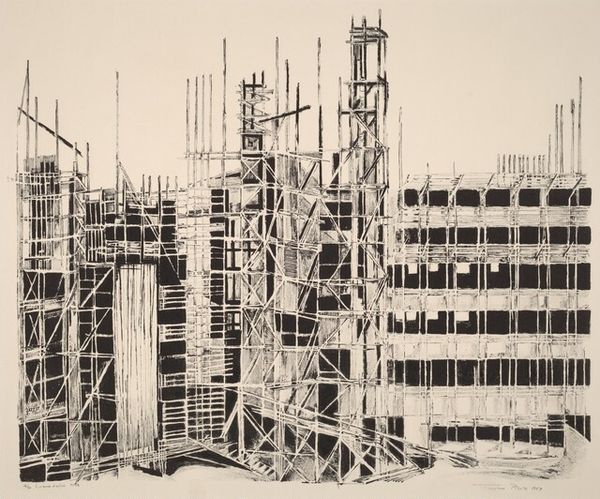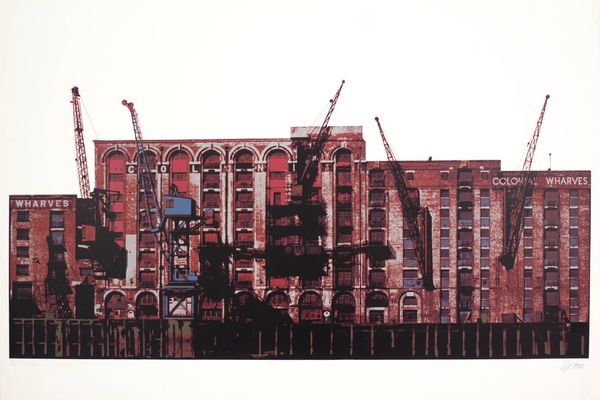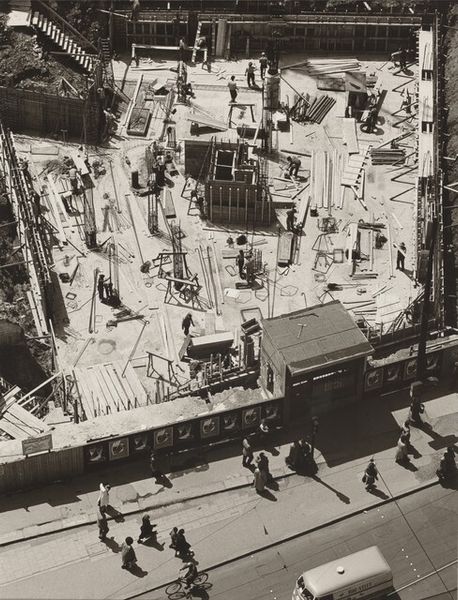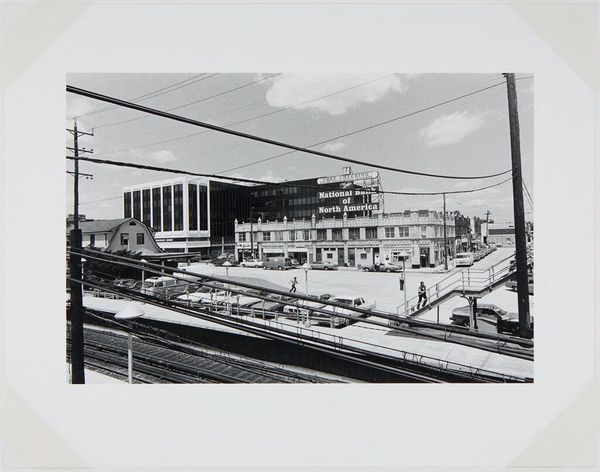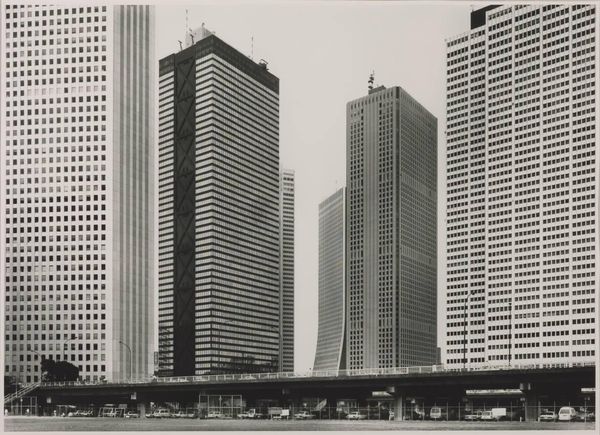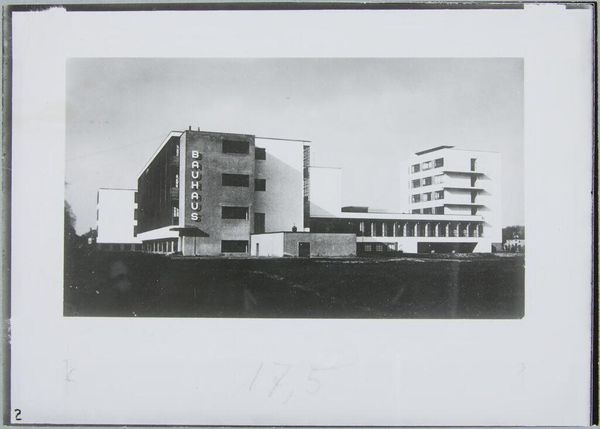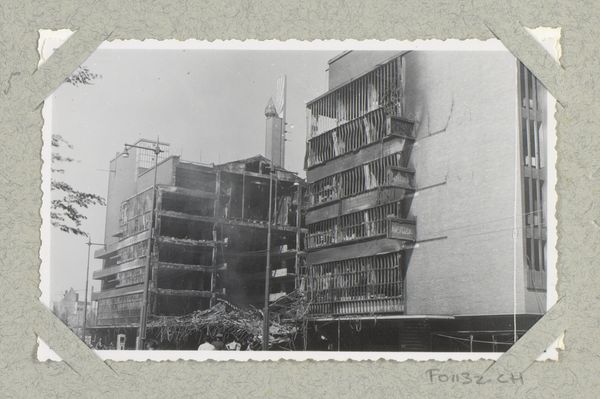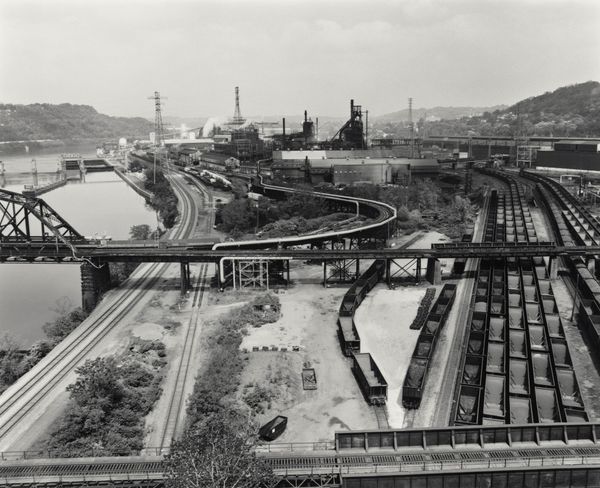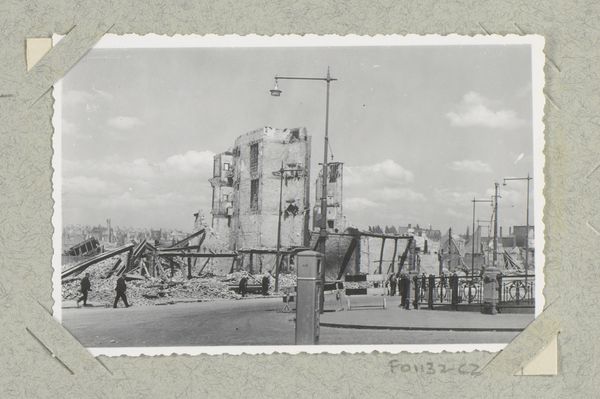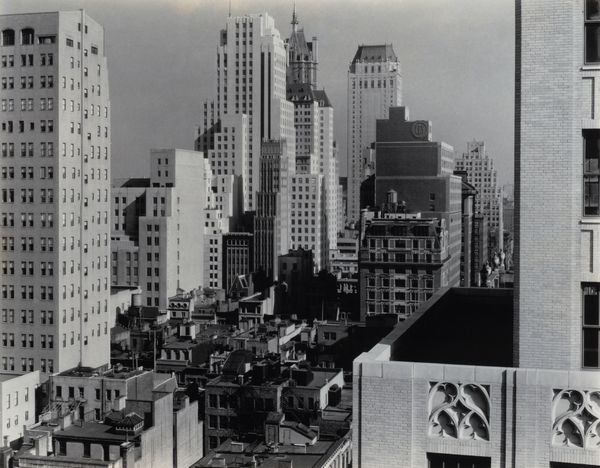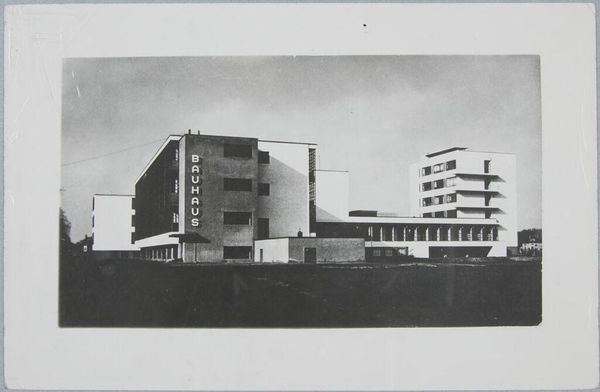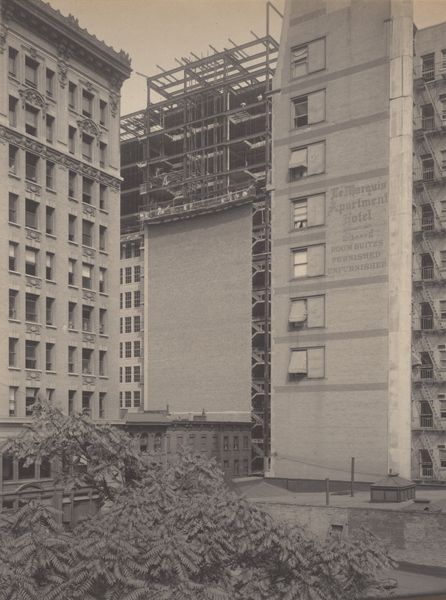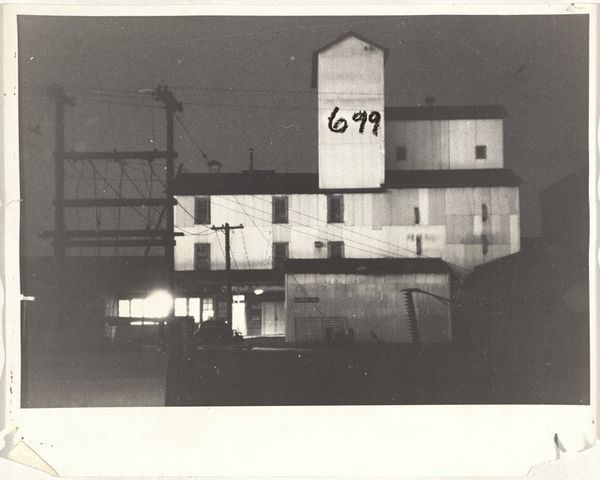
Dimensions: image: 349 x 594 mm
Copyright: © Thomas Struth | CC-BY-NC-ND 4.0 DEED, Photo: Tate
Curator: Thomas Struth captured this image, titled "Shinju-ku (TDK), Tokyo 1986," a black and white photograph now held in the Tate Collection. Editor: It has an almost overwhelming visual density, doesn’t it? The layering of buildings and signage feels like a physical manifestation of late-capitalist excess. Curator: Absolutely, and it reflects the period's economic boom in Japan. Struth, as a student of Bernd and Hilla Becher, is known for his objective style, but here, the city itself seems to be making a statement about consumption and spectacle. Editor: The materials are so interesting. The photograph itself, the paper, the ink… they’re almost silent witnesses to the explosion of advertising materials depicted. TDK, Moony, they’re all woven into the urban fabric. Curator: Precisely, and the photograph allows us to consider these brands, not just as corporate entities, but as part of the cultural narrative of 1980s Tokyo. Editor: Seeing it in black and white really strips away the allure, doesn’t it? Exposing the underlying structures and sheer volume of it all. Curator: Yes, it invites us to consider the socio-political implications. Editor: It makes me think about how we consume and are consumed by these images. Curator: A thought-provoking piece, indeed. Editor: The layers of commerce give it a somewhat unsettling feel.
Comments
tate 6 months ago
⋮
http://www.tate.org.uk/art/artworks/struth-shinju-ku-tdk-tokyo-1986-p77744
Join the conversation
Join millions of artists and users on Artera today and experience the ultimate creative platform.
tate 6 months ago
⋮
Thomas Struth began taking photographs of industrialised cities when he was studying under Bernd Becher (born 1931) at the Düsseldorf Academy in the late 1970s. He has continued to explore and develop the theme for almost twenty years, focusing his attention on such cities as New York, Tokyo, Berlin and Naples. Since the mid 1980s he has also produced landscapes, portraits and photographs of visitors in museums. Struth's images of the urban environment concentrate on seemingly unspectacular streets and public spaces. He seeks to record the face of urban space, seeing the architectural environment as a site where a community expresses its history and identity. In interviews he has stated that his images aim to explore what public spaces 'might say about the people who live in these sites.' (Quoted in Gisbourne p.5.) In recording the urban environment, Struth deliberately refers to the tradition of black and white documentary photography, adopting a seemingly objective position. The compositions are simple and the photographs are neither staged nor digitally manipulated in post-production. Struth has said: 'for me it is more interesting to try and find out something from the real than to throw something subjective in front of the audience.' (Quoted in Minelli p.190.) However, in spite of a link to the reportage tradition, Struth avoids both its snapshot approach and its quest for the capture of a fleeting, spontaneous image. Rather he carefully selects the sites where, using long exposures he makes sharply focused images. In Shinju-ku, (TDK), Tokyo 1986 Struth focuses on a busy intersection in urban Tokyo. He has taken the photograph from the middle of the road, pointing the camera down the street. As a result the spectator's eye is drawn into the image and invited to inspect the architectural environment. The technique is one which Struth has employed in many of the street scenes since the late 1970s. However, unlike many similarly constructed images, such as Ferdinand-von-Schill-Strasse, Dessau 1991 (Tate P20155), which focuses on a stage-like empty street, the Tokyo photograph is not deserted. It is rather filled with people and movement, presenting an image of chaotic urban activity. Pedestrians cross the road and bustle along the pavement, cars fill the street and a train can be seen speeding over the bridge in the centre of the image. The city that Struth presents is unregimented: there is little architectural unity. The bill boards and neon signs which fill the image demand attention, jostling for space on the roof tops and facades. Because so much activity is included in the image, Struth is able to evoke the dynamic energy, speed and frenetic temporality characteristic of contemporary Japanese urban culture. However, despite the activity, Shinju-ku, (TDK), Tokyo 1986 is typical of Struth's output in that it meticulously records the face of the cityscape. Strong contrasts of light and shade are also avoided, Struth preferring the greyish, uninflected light of early morning. This serves to enhance the neutral treatment of the scenes. In his photographs Struth seeks to present aspects and views of cities which are not normally seen. The detailed, neutral images ask to be carefully scrutinised, the spectator being invited to look and to question. As Struth has said, his work is intended to 'give pause', and thus resist immediate consumption. He seeks to bring about a 'move to investigative viewing' which is also a 'call to interact.' (Quoted in Buchloh p.31.) Further Reading: Mark Gisbourne, 'Struth', Art Monthly, no.176, May 1994, pp.3-9Giovanna Minelli, Another Objectivity, exhibition catalogue, Centre National des Arts Plastiques, Paris 1989, pp.189-194Benjamin Buchloh, Portraits: Thomas Struth, exhibition catalogue, Marian Goodman Gallery, New York 1990Thomas Struth: Photographs, exhibition catalogue, The Renaissance Society at the University of Chicago, Chicago 1990, reproduced p.13 Imogen Cornwall-JonesAugust 2001
